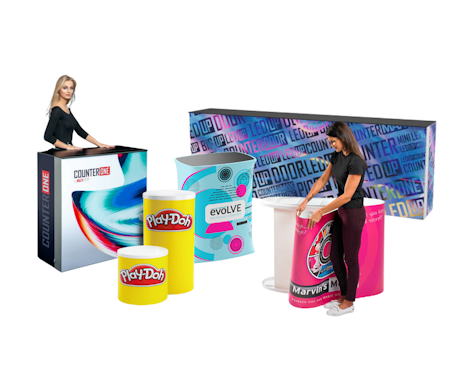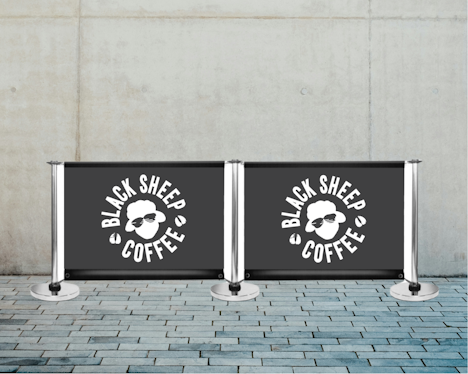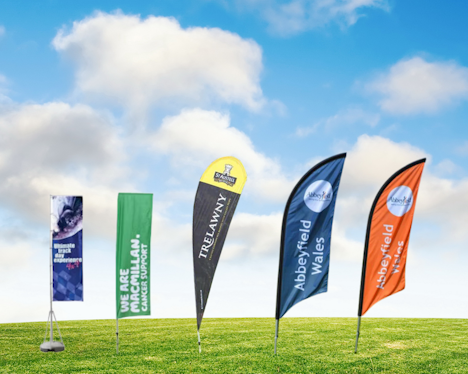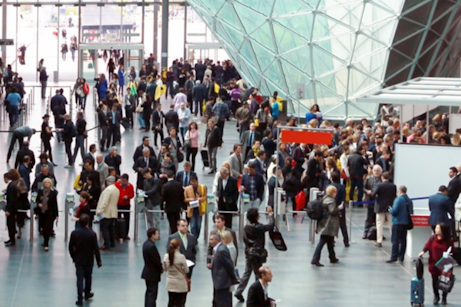Augmented and virtual reality provide a cutting-edge to exhibitors wishing to make an impact at events.
Trade shows are a great opportunity for businesses to market themselves and showcase their products or services. However, these events are also highly competitive, because exhibitors must compete for the attention of the many hundreds or thousands of attendees.
As in the retail sector, success in trade shows is all about footfall. Augmented and virtual reality can provide that much-needed 'wow factor' to help increase visitors to your stand. This will only work, though, if exhibitors use this technology in the most effective ways.
What's the Difference Between Augmented and Virtual Reality?
Augmented Reality
Augmented reality is when the virtual world is superimposed on the user’s view of the real world, providing a ‘mixed view’ where computer-generated images interact with the user’s surroundings.
Augmented reality or AR allows brands to present information on products in a more interactive way than through leaflets or even video content.
The primary methods for displaying AR content are:
Smartphones and tablet screens: Users can access AR content through certain apps, available on both iOS and Android or QR codes.
AR Smart Glasses: These differ from VR headsets as they are transparent, allowing users to both see their surrounding environment and the digital data superimposed on the background.
This example from Toyota shows how AR can be used at trade shows to bring extra depth to the sample product, in this case three of their new trucks.
Virtual Reality
Virtual Reality, also known as VR, is the use of computer technology to create a simulated environment. It differs from AR in that the user is not being made to interact with their ‘real’ surroundings, and is instead transported to an artificial world where they are able to interact with elements unlike mediums such as video content.
The primary methods for displaying VR content are:
Oculus Rift headsets transport the user into a highly realistic digital world through their vision.
Google Cardboard can simply and effectively transform a smart phone into a virtual reality headset using certain apps.
This example from a tourism exhibition shows attendees experiencing destinations from around the world through immersive VR headsets.
The Benefits of Using AR and VR at your Trade Show
Visualising and Demonstrating Your Product
Yes, you could just bring your product to the show, and yes this works for some companies. But what if you could immerse your audience in what you do? What if they could experience the true scope and complexity of it?
Virtual reality can transport users to all sorts of settings and give them a broad range of experiences they would otherwise not have.
AR and VR are therefore becoming a key part of the increasingly popular trend of experiential marketing. One example of this is the 360° video from North Face below, designed to be experienced with a VR headset. In the video, the user is transported to an epic mountain climb in Nepal - creating a unique experience for potential customers as well as showcasing some of the North Face products in action.
Personalising the Visitor Experience
This personalisation aspect is another benefit of using augmented and virtual reality at trade shows. It focuses on the individual and on their specific experience.
For instance, the technology can be used in such a way that visitors can customise virtual exhibits in a way completely unique to them.
Cancer Research UK created an immersive, personalised experience using VR to recognise the 100,000 people who left the charity a gift in their will.
This was debuted at the RHS Hampton Court Palace Flower Show where a field of 100,000 virtual supported came to life when viewed through a virtual headset. By typing in the name of their loved ones, friends and family were able to see their specific flower and name of the donator come to life with a personal thanks from the charity.
Maximising Your Virtual Showroom Space
Generally, individual exhibition stands are not large spaces, but virtual reality can create an entire showroom area, complete with a range of experiences.
These can be truly immersive, drawing visitors into a powerful world of storytelling for your brand.
Where you have extensive product lines, you can use technology to give visitors access to your entire range.
Augmented and virtual reality are perfect for both space-saving and for broadening your creative capacity.

Training Your Prospects
What if at the same time as promoting a product you could also train prospects on how to use it properly?
This is a neat, efficient and attractive use of a try-before-you-buy approach. With 92% of trade show visitors saying the main reason they attend events is to see new products, the interactive capabilities of both AR and VR allow for even the most complex products to be sample virtually.
Again, it comes down to immersing attendees in your world and making your product memorable by integrating it into the individual visitor experience.
Demonstrating the Leading Edge
Where you have something new and potentially revolutionary to showcase at a trade show, capturing how it will perform in reality is a potent means of getting its benefits across to people.
Virtual reality has proved especially effective at medical and tech-based trade shows for this reason.
It’s true that ‘seeing is believing’ so demonstrating a cutting-edge piece of technology in a more visual fashion will position your organisation at the forefront of its industry.
Take a look at an example from McLaren who use VR to demonstrate a concept car that otherwise may have been considered too ambitious.
Attracting Immediate Feedback
An important aspect of exhibiting at a trade show is gaining feedback from visitors to your stand. Virtual reality experiences offer an immediate experience to visitors and users, meaning you can get immediate feedback on what they think of your product or service.
Moreover, making the visitor experience as vivid as possible also helps with the important activity of following up leads after the trade show. Creating something that resonates powerfully with visitors will ease the path to connecting and developing meaningful relationships with them.
In Summary
A trade show is an extremely competitive space, where you and your competitors are vying for vital leads and exposure for your business.
In this environment, augmented and virtual reality can help your brand stand apart from the crowd, making your exhibit more attractive for passers-by as well as presenting information in a more engaging manner.
AR and VR are therefore fantastic tools for creating a virtual showroom, personalising the visitor experience and positoning your brand at the cutting-edge of its industry.
posted in Marketing Advice
Share this Event







